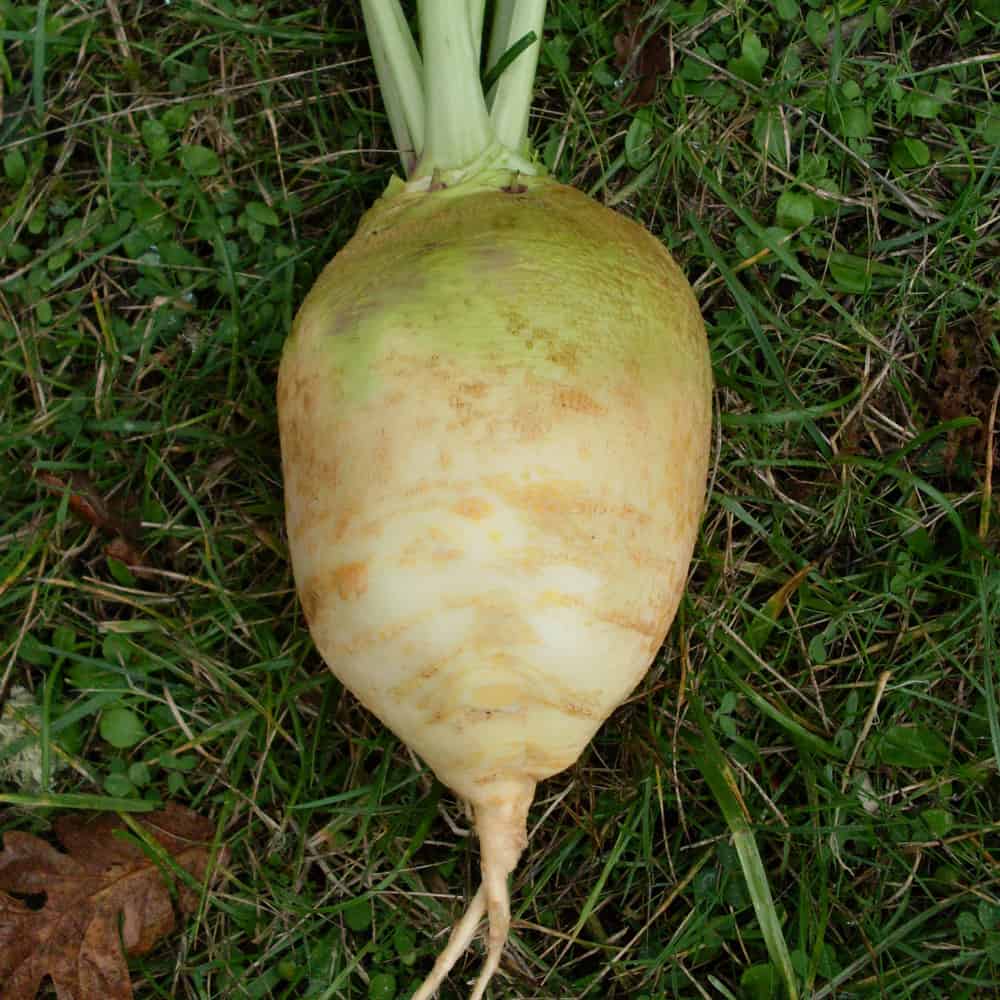Rutabaga, Nadmorska (Organic)
Brassica napus. 80+ days.
Large, green-topped Lithuanian rutabaga with golden flesh. they grow into a uniform, large, round shape. Vigorous and early-maturing with very little neck. Nadmorska has a slightly more mustard spiced flavor than the purple top rutabagas. It combines very well with other roots like beets and potatoes in the roasting pan. We like the flavor a lot, making it a definite winter garden staple. We discovered this variety in a garden store in Lithuania during our 2006 Seed Ambassadors Project trip.
Seed produced by Ferry Boat Seeds on San Juan Island, Washington.
As required by the Oregon Department of Agriculture and the Washington Crucifer Quarantine, all Brassica family seed lots have been tested and found negative for blackleg (Phoma lingam) by an approved, certified lab.
Cannot ship to Canada
| Geographical Origin |
|---|
Direct sow March through August in rows that are 1’ apart. When seedlings are 3” tall, thin to 3” spacing for turnips, and 8″ spacing for rutabagas. Don’t forget to eat the greens! In our area, rutabagas can grow through winter without protection as long as the mice don’t find them. Only some varieties of turnip have the same hardiness. Both can be harvested in autumn and stored for many months in root cellar conditions.
Seed Saving
Collect seeds from 20 or more plants (to avoid inbreeding) in the second year when seeds have dried down. Cut seed heads, place on tarps to dry a few days, then dance to free seed. Winnow to clean. Isolate from other Brassicas of the same species by ½ mile for B. napus, and 1 mile for B. rapa (watch out for wild turnip!).



devon.brewer (verified owner) –
Where did you grow this variety? Washington
Nadmorska is the “spiciest” and biggest variety of rutabaga I’ve grown (I’ve grown several varieties). That probably relates to its greatest resistance to cabbage root maggots. It does get invaded by some, but usually fairly superficially. It tastes good, with a hint of sweetness. I harvested from November through February. I’ve prepared it only as steamed and dried. Note: many people do not like the pungent odor of raw or cooked rutabagas, so for family harmony, I no longer grow them.
Grown in zone 8b, although it really is more like 7a in recent years.
Upvote if this was helpful (0) Downvote if this was not helpful (0) Watch Unwatch Flag for removal